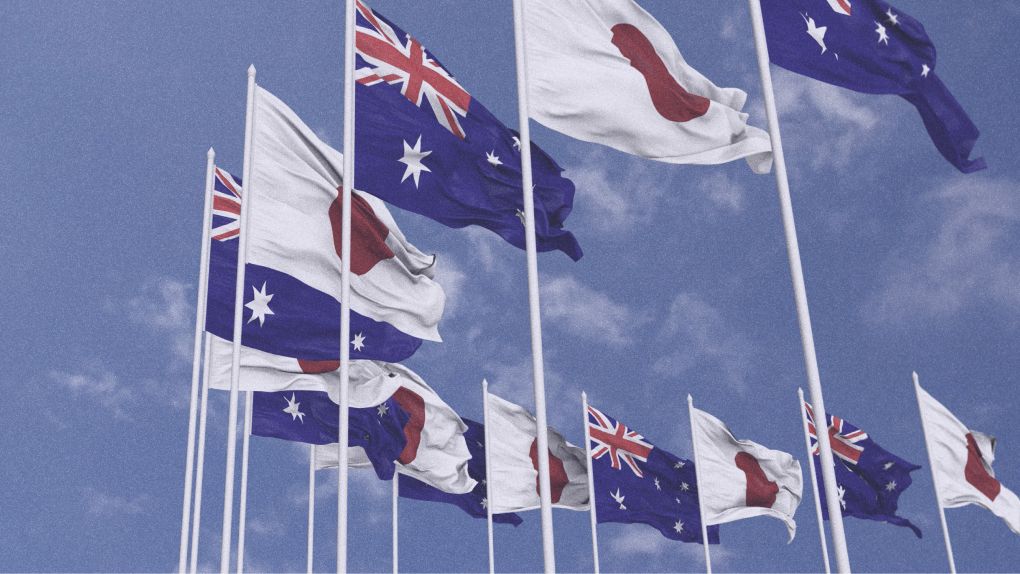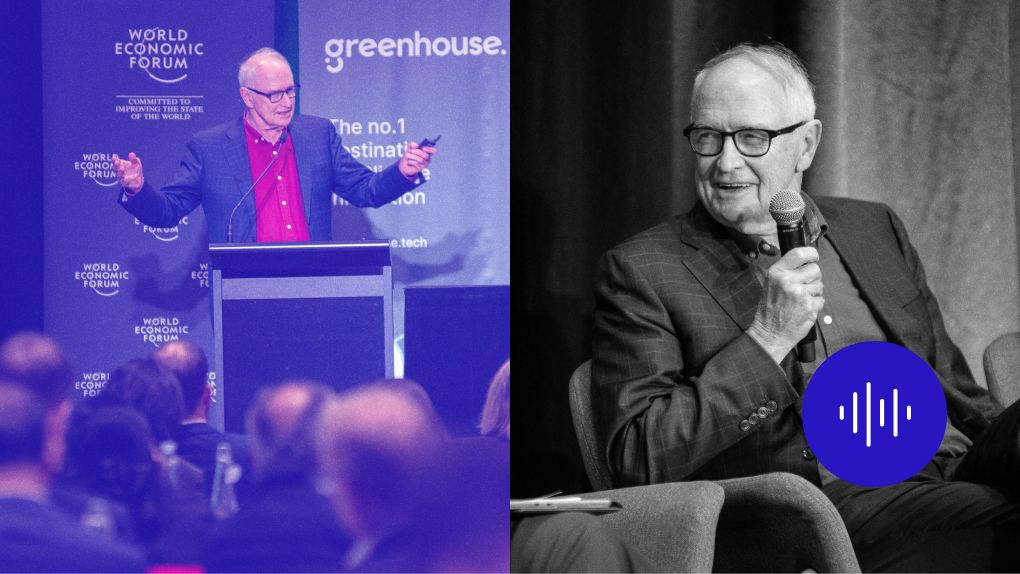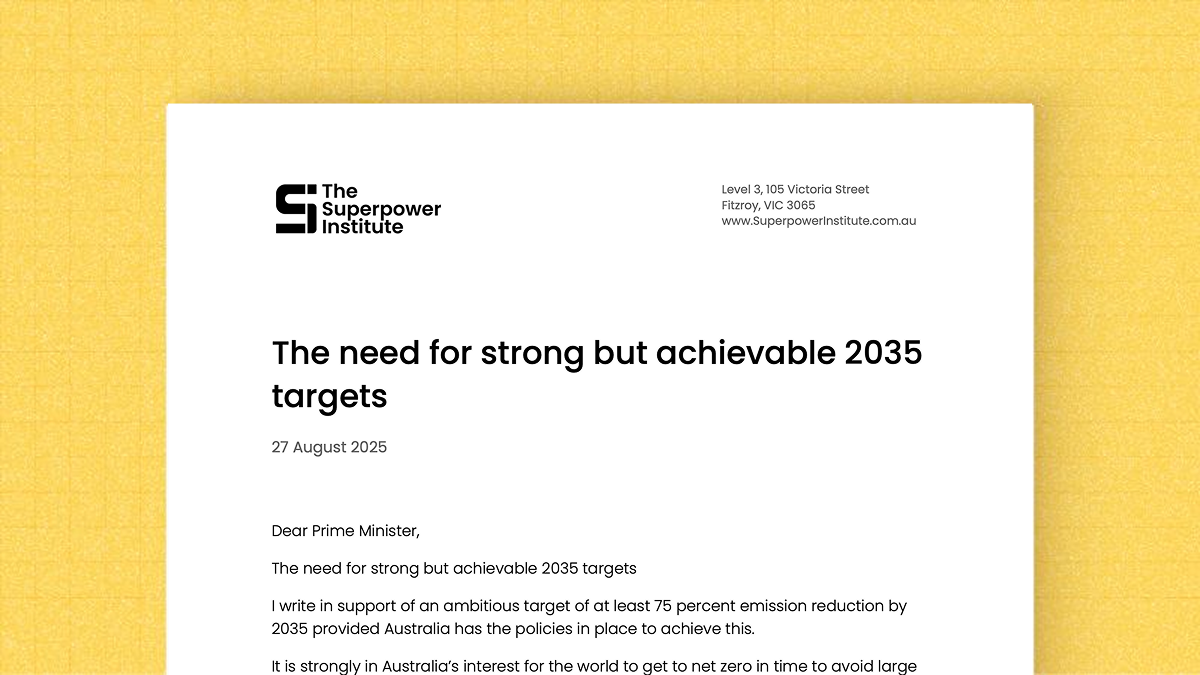Transcript:
Today is ANZAC Day in Australia, a national holiday remembering the horrors of war and the sacrifice of Australians in wars of the past. It commemorates the landing of troops at Gallipoli in Turkey on 25 April 1915, in the first large-scale Australian and New Zealand engagement of World War I. My late father-in-law, great grandfather of our grandchildren, landed, was wounded and evacuated as the early sun lit up the beach on that first morning.
There is a painting in the Australian war memorial of the Japanese naval ship HIJMS Ibuki, protecting the ships carrying the Australians across the Indian Ocean to that fateful encounter. Australia and Japan had made important contributions to each other’s early modern story in the quarter century before the first ANZAC Day. In 1890, only a few decades after the Meiji Restoration began Japan’s journey to leadership in global development, Fujishiro Kanematsu moved to Sydney to connect the dynamic young Kansai textile industry with the world’s main source of raw materials for woollen textile. He established an early prototype of the Sogo Shosha that came to be crucially important in linking Japanese development to the global resources that it needed for success.
Over the next quarter century Australia and Japan did many good things together. We also both made mistakes that contributed to the catastrophe of the 1930s and 1940s. We learned from what we did right and also from what we did wrong in the 67 years between the establishment of the first Sogo Shosha office in Australia, through World Wars I and II, to the establishment of new foundations for a partnership in 1957.
The origins of our prosperity
In the 67 years since the foundation of a special partnership between Australia and Japan, the knowledge gained from experience has allowed us to do something great, and something new in modern history. We proved that a big country with exceptional deficiency in the natural resources required for modern economic development, can securely, reliably and economically attain and sustain the highest achievements of modern economic development. It can do this through peaceful, secure commercial trade with a country that has an abundance of resources and a deficiency of local demand to make use of them. We proved that such a relationship can underpin high standards of living in the resource exporting as well as the resource importing country. We proved that this can enhance each country’s trade relations with others, and therefore enhance regional and global development. We developed a model of trade and development that is now required on an even larger scale to meet the great challenges facing the global community today.
We have demonstrated since 1957 that two societies with very different political, social and economic histories can build the trust, the inter-personal relations and understanding, the institutions, and the mutually compatible policies that allow each to rely fundamentally on the other’s strengths to realise national economic prosperity and security. Together, we have developed approaches to international exchange that have supported a long period of successful development in the Asia Pacific. Together, we have developed approaches to international cooperation that can overcome what sometimes seem to be insurmountable obstacles to global security and prosperity, in an era of vulnerability to human-induced climate change and of potentially destructive competition between political systems.
The new era of friendship, understanding and cooperation began with the Australia-Japan Trade Agreement of 1957. The two countries moved beyond the destructive legacy of a recent war to a new trade relationship that was to expand what was possible in economic development in both countries. Through the Agreement, Australia became one of the first countries to remove postwar discrimination and extend Most Favoured Nation treatment to trade with Japan. Japan reduced tariffs on products important to Australia, most importantly wool. Crucially, Australia and Japan reduced barriers to trade with each other without introducing any discrimination against any other country.
Of central importance to the new relationship was the growth of knowledge and trust between the Australians and Japanese involved in the trade and investment. The Australia- Japan Business Cooperation Committee (AJBCC) had its first meeting in 1964, and ever since has played an instrumental role in building feelings of mutual respect between individuals involved in trade and investment. Leaders of politics and thought in both countries participated in discussions. The 60th annual meeting of the group last year was its largest ever.
Close inter-governmental relations supported stable, outward-looking policies that underpinned trade expansion. Japan became Australia’s largest destination of exports. Australia became by far the main source of the immense quantities of metallic minerals required for the outperformance of the plan of the Japan Economic Planning Agency to double output in a decade, in the 1960s, and to keep on growing much more rapidly than other developed countries until the late 1980s.
The new approach to international economic cooperation overcame what had been seen as structural weaknesses of poor natural resource endowments in Japan, and of small scale and isolation in Australia.
The new ways were manifested first in a new iron ore trade. Australia overcome inhibitions dating back to pre-war tensions to remove bans on iron exports. Businesses from the two countries established a new way of financing major new projects dependent on international trade: project financing underpinned by long-term sales contracts. The Japanese trading companies played major roles in bringing together arrangements that were to open vast new frontiers of growth for both economies.
The bilateral relationship entered new territory when the oil crises of the 1970s increased costs and anxiety about security in energy trade. Confidence in the bilateral relationship supported reduction in energy intensity in the Japanese economy. The energy-intensive aluminium industry, once the largest amongst the world’s market economies, moved offshore. In its place, new smelters were built taking advantage of low-cost coal-based electricity in New South Wales, Victoria and Queensland. A new uranium trade emerged after long introspection about safety risks in both countries. The technologically complex new LNG trade was built on long-term contracts and minority investments from Mitsubishi and Mitsui, Japanese Government loans, and an agreement from the Western Australian Government to take a substantial amount of output for domestic use at prices well above international levels. When those take-or-pay contracts threatened the bankruptcy of the WA state government in 1983, the Commonwealth stepped in with fiscal support to avoid default.
The development of the new coalfields in Queensland and associated aluminium smelting involved heavy investment by the state government in rail, port and electricity infrastructure, in support of commitments by the Japanese trading companies.
The developments in the energy trade shifted Japan from overwhelming reliance on imports of petroleum from the Middle East, to a diversified energy supply with Australia playing the largest role. Japan now imports nearly 90 percent of its energy. Australia delivers around two thirds of Japan’s coal (both metallurgical and thermal),1 40 percent of its gas,2 and a third of its uranium.
The author of the plan to double output in a decade, Saburo Okita, then President of the Japan Economic Planning Agency, saw securing resource supply and a strong relationship with Australia as the underpinnings of Japanese development. Over many years, he built a close and productive working friendship with the main Australian official responsible for the 1957 Agreement, Sir John Crawford, then Secretary of the Australian Department of Trade. By the mid-1960s Okita and Crawford were in private roles that gave them even greater opportunities to strengthen Japan-Australia relations: Okita as President of the Japan Economic Research Centre; and Crawford as Professor of Economics and later Vice- Chancellor and then Chancellor of The Australian National University. Okita’s Japan Economic Research Centre supported by Professor Kiyoshi Kojima and other economists at Hitotsubashi University became the Japanese end of productive Japanese-Australian work and thought on future bilateral, regional and global economic cooperation. Crawford’s Australia-Japan Research Centre supported by Professor Peter Drysdale and other economists became the Australian end. They established the Pacific Trade and Development Conference series, which remains important today for developing and sharing ideas about regional economic relations. They brought in leaders of thought about economic cooperation from Southeast Asia, including Dr Hadi Soesastro and colleagues at the Centre for International and Strategic Studies in Jakarta. They brought in leaders of thought about international economic relations from the United States, including Professor Hugh Patrick at Yale and later Columbia University. They brought leading thinkers from Korea, seeking to simulate Japan’s successful development as a resource-poor country requiring deep and secure integration with complementary economies. They brought in China after the decisions on economic reform and opening to international trade in the late 1970s, in ways that allowed full participation from Hong Kong and Taiwan.
Okita was made Foreign Minister by Prime Minister Masayoshi Ohira in 1978. This was the only ever use of a provision in the postwar Japanese constitution for ministers to be appointed from outside the Diet. He immediately accompanied Prime Minister Ohira on a visit to Canberra to discuss regional cooperation with Australian Prime Minister Malcolm Fraser. I recall, as clearly as if it were today, our discussion with Okita and Crawford of how the two countries would support the establishment of an institution to expand Asia Pacific economic cooperation.
The Pacific Community Seminar in Canberra in 1979, at which it was my honour to be Assistant Chairman to Sir John Crawford, led to formation of the Pacific Economic Cooperation Council with participation from leaders of business and thought. This contributed eventually to Asia Pacific Economic Cooperation (APEC) from its first meeting hosted by the Hawke Australian Government in Canberra in November 1989.
There was recognition from the Australia-Japan experience that trust between people involved in the relationship was an essential accompaniment to removal of formal barriers to trade in deepening trade and investment ties. Trust was built on experience of respectful interaction, and knowledge about each other. Respect, knowledge and trust reduced uncertainty, lowered transaction costs and increased the amount of and gains from trade and investment.
Southeast Asian participation reinforced support for informal rather than institutional integration. It reinforced commitment to non-discrimination in the deepening of regional integration. “Open Regionalism” became the guiding concept: deepening trade and investment ties without discrimination against outsiders. It should be built around support for the multilateral trading system embodied in the GATT (later the World Trade Organisation). Economic ties would be richer among regional partners because trust and knowledge of opportunity were greater, and not because trade or investment with third parties was restricted by tariffs or regulation.
Concerted, unilateral liberalisation of trade and investment became the modus operandi of Open Regionalism. Unilateral, because decisions to lower policy barriers to trade and investment were taken separately by sovereign governments. Concerted, because the sharing of knowledge and understanding of what others were doing provided confidence that the gains from liberalisation at home would be enhanced by the expansion of regional markets by liberalisation in important trading partners.
Concerted, unilateral liberalisation to advance Open Regionalism underpinned trade liberalisation throughout the Western Pacific through the 1990s until the East Asian financial crisis in 1998. Unilateral liberalisation was supplemented by negotiated measures in the Uruguay Round under GATT auspices for some of the hardest knots of protection, including agriculture in Japan and Korea. Negotiated liberalisation was important again around China’s entry into the WTO.
Support for the emergence of China as a major participant in international exchange was another contribution of Japan-Australia cooperation. China in the early years of opening to the international economy, even more than Japan and Korea, had initially been reluctant to rely heavily on international markets for resources that were essential for development. Its endowment of energy and metallic mineral resources were proportionately larger than those of Japan or Korea. But as in Japan and Korea, it became clear that reliance on domestic resources would seriously truncate opportunities for development.
The Japan-Australia trading relationship was important as a model, but important more directly as well. As Australia’s Ambassador to China in November 1985, I was given an honoured seat at the opening of China’s first steel mill using modern international technology and approaches: the Baoshan steel mill near Shanghai. My seat came from the decision to use some high quality Australian ore. With me was a senior executive of a Japanese trading company which had contributed to understanding of the value of Australian ore in modern, high performance steel-making technology.
Saburo Okita, back in private life, was appointed as the Japanese Chair of a Commission to advise on long-term Sino-Japanese relations. On his visits to Beijing, he would call on me in the Australian Embassy to discuss the possibilities.
Australia and Japan remained steady in maintaining open people-to people relations with China through the ups and downs of political and economic change in China. Australia with support from Japan and APEC contributed much to acceptance of China as a member of the World Trade Organisation in 2001—immediately following an APEC leaders’ meeting in Shanghai. China became the dominant export market for both of us. The contribution this made to each of our prosperity contributed positively to our trading relationship with each other.
Building a prosperous future
I have discussed at length the history of Australia-Japan cooperation over the past 67 years, because it holds a torch for successful global development in the difficult years ahead.
We are faced with two immense challenges. One is stopping human-induced climate change before it destabilises global economic development and the international political order. The other is restoring open, multilateral trade and investment as the foundation for global development. Our own prosperity and security depend on the international community meeting these challenges.
Australia and Japan and all other countries have agreed to limit temperature increases to within 1.5 degrees above pre-industrial levels. That requires net zero emissions in the world as a whole by 2050. Developed countries have accepted that some developing countries will take longer. Some European countries have formally committed to net zero by 2045. Most developed countries, including Australia and Japan, have committed to net zero by 2050. That for the time being is the solemn commitment that we have made to each other and to all other countries.
Honouring that commitment requires immense change over the next quarter century in technologies applied to most economic activities, to economic structures within all our countries, and to comparative advantage in international trade.
The Paris and Glasgow agreements in which Australia, Japan and all other countries committed themselves to the 1.5 degree objective, owe much to the approach to international agreements developed for APEC in the 1990s. After the failure of formal negotiations on emissions reduction targets for each country in the Copenhagen Conference of the Parties to the UNFCCC in 2009, concerted unilateral mitigation became the modus operandi of the annual meetings under UN auspices. That was the beginnings of substantive progress in global climate change mitigation efforts.
The countries of Northeast Asia and most European countries had strong comparative disadvantages in energy and carbon and hydrocarbon inputs into economic activity in the fossil carbon economy. They became the world’s largest importers of coal, oil and gas. Comparative disadvantage was greatest of all in Japan and Korea.
Australia’s immense coal and gas resources and small domestic demand gave it a strong comparative advantage in fossil carbon. It became the world’s largest exporter of coal and LNG, taken together. Geographic proximity and the high quality of the relationship made Australia by far the main supplier of fossil carbon to Japan—more than twice as important as the second, Saudi Arabia.
The zero-carbon economy is in some ways similar and in some ways different to the fossil carbon economy.
It is similar because the densely populated, highly industrialised economies of Northeast Asia and Europe have strong comparative disadvantages in producing zero-carbon energy and other industrial inputs.
It is similar, because Australia has immense natural resources for solar and wind power generation, and the space to deploy them. It has space and skills for sustainable production and harvesting of biomass for zero-emissions transport fuels and industrial inputs. Its advantages relative to the rest of the world are even greater than in the fossil carbon world economy.
Australia can be the reliable, secure and economically competitive source of a high proportion of the energy and carbon-connected industrial inputs in the zero-carbon world. There are fewer alternative sources for these imports into Japan, so we can expect Australia’s role to be even greater than in the fossil carbon trade.
One third of Japan’s fossil fuels are used to generate electricity. The other two thirds are used directly in vehicles, buildings, industry, and agriculture. Roughly 15-20 percent of all fossil fuels are used for non-energy purposes, as a source of carbon for creating chemicals, plastics, and reducing iron oxide into iron metal.
Today Japan uses around 955 TWh of electricity. With full decarbonisation of industry and transport through electrification, Japan’s economy would require around 2.1 PWh, or about 2.2 times as much as it presently uses. This demand must be satisfied by zero-carbon electricity supply. Today, nuclear and renewables together produce around 268 TWh, or around 12 percent of what may be required in the future. Another 88 percent remains.
Japan has poor endowments of energy and minerals, but is rich in human capital and quality institutions. This produced its current trade pattern, and its relationship with Australia. It will produce its future trade pattern. Resisting the realities of comparative advantage stalls development, nationally and globally, and will stall climate mitigation.
Japan’s renewable resources are among the world’s most expensive, and Australia’s are among the cheapest. The IEA and IRENA put Japan’s solar LCOE at between 2.5 and 4.5 times Australia’s, at up to US$172/MWh. They estimate costs for Japanese onshore wind at between three and four times Australia’s, at up to US$140/MWh. The IEA finds that Japan will be by far the most expensive producer of green steel, with average costs approaching double those of China and 150% of the US.3 Japan’s Renewable Energy Institute has stated that “the best approach is to produce crude steel in Australia.”
Japan will use offshore wind, which is generally around 50-100 percent more expensive than onshore wind. In Japan, the IEA estimates costs of US$200/MWh.
Nuclear power may be the cheapest option for clean electricity today, with the IEA estimating a cost of US$87/MWh. This is several times the cost of renewable power at better Australian sites. Utilisation of nuclear is hampered by the difficulty of accelerating rollout; the current pace of expansion would see nuclear shrink to supply only 7 percent of electricity by 2050. Great acceleration will increase costs, placing pressure on scarce skills and engineering capacity.
Finally, importing hydrogen in molecular form or through ammonia or other compounds as carriers is not a low-cost solution. IRENA expects costs to fall to US$100-200/MWh by 2050.
One big difference between the fossil carbon and the zero-emissions world is that zero- carbon energy is more difficult and expensive to transport between continents than coal, gas and oil. The latter costs little or no more delivered into Japan than in centres of Australian demand away from the regions where the coal and gas are mined. If renewable electricity were transported to Japan by submarine cable, or as hydrogen or such hydrogen carriers as ammonia, it would be several times as expensive as in Australia. Japan will need to import some expensive electricity through cables or as hydrogen or ammonia to light and heat homes and offices and to fill car batteries. But it will not import energy in these forms as inputs into industries that supply markets subject to international competition. To remain globally competitive in any industry requiring inputs made from renewable energy or biomass—and this is most manufacturing industry—Japan will need to import inputs embodying the resources that it cannot economically supply for itself. Australia is the natural supplier of the green iron made from Australian iron ore and renewable hydrogen, the green aluminium from Australian aluminium ores and renewable electricity, the green polysilicon from Australian silica (sand or quartz), bio-carbon and renewable electricity, and the green transport fuels from Australian hydrogen and biomass. Imports from Australia of zero-carbon goods would keep Japanese production globally competitive, for cars, machinery, electronic goods and plastic products using iron, aluminium, silicon metal and bio-gas or bio-oil.
Importing iron metal embodying Australian renewable energy would avoid 250-320 TWh of the clean electricity demand that would be required to electrify steelmaking via hydrogen. That is about 50-65 percent of the “gap” remaining, should Japan successfully double the pace of solar installation, quadruple that of wind, and increase new nuclear builds by an order of magnitude. It would cut emissions by around 120-165 Mt, or from 11 to 15 percent of 2021 emissions. It is equivalent to avoiding construction of around 35-45 GW of nuclear power (or more than twice that of offshore wind).
For Australia to do well economically in these new circumstances, it will rely on imports from Japan and other countries for the many products in which it lacks comparative advantage.
Australia and Japan can provide a model for the rest of the world in the zero-carbon economy, as we have in the fossil carbon economy of the past. The role of respect, knowledge and trust among people involved in trade and investment relations between our countries will be as important as ever.
There will be a great need for innovation in technologies, business models and policies. We will need to work together to ensure that the innovations are secured in time and knowledge of them spread promptly to all that need to understand them.
We will each need new domestic policies to correct the external costs of carbon emissions and the external benefits of innovation in decarbonisation. Lessons from experience in Japan-Australian relations suggest that Japan and Australia should encourage discussion in and with each other of the merits of alternative policies for reaching shared objectives.
These next decades of transition to net zero will be full of rapid change and stress. There will be times when we doubt each other’s will to meet our solemn commitments on decarbonisation to each other and to the rest of the international community. It is important that we give each other no cause to doubt the other’s will.
As with the iron ore and coal and gas trades, success in trade and investment between Australia and Japan can demonstrate to our neighbours and the rest of the world that the most different of economies can support each other in achieving common prosperity.
The foundations of prosperity and security
I conclude by returning attention to one other lesson of the past 67 years. The world faces a special challenge in decarbonising economic activity at a time of intense competition between political systems. China has by far the world’s main capacity for manufacturing equipment to decarbonise energy, transport and industry. This partly reflects its manufacturing capacities and skills. It partly reflects early realisation that the zero-carbon processes would be especially valuable through the global climate and energy transition. The availability of Chinese solar panels, wind turbines, batteries, electric vehicles and other products increases the chances of the world successfully avoiding catastrophic climate change.
It is, however, inevitable that geo-political tension, especially between China and our mutual ally the United States, will raise pressures for discrimination in international trade. There may be some circumstance in which restriction on international trade and investment is warranted on geo-security grounds. It is important that claims of such circumstances are examined analytically, and the costs of trade and investment restriction considered alongside any geo-strategic benefit. To allow the current tensions to lead to indiscriminate restriction of international trade and investment would guarantee failure for all our political systems in meeting our collective and individual challenges.
Open, non-discriminatory trade is important now, even more than it was when Japan and Australia moved away from the wartime legacy of trade restrictions 67 years ago. It is time now to invest once more in building relations of trust among Australians, Japanese and our neighbours in the Asia Pacific region that will provide the foundations of prosperity and security for the next 67 years.
Ross Garnaut
Director
Ross Garnaut AC is a renowned economist specialising in development, economic policy and international relations. He is Professor Emeritus at the University of Melbourne and a Fellow of the Australian Academy of Sciences. His contributions to trade policy and climate change have made him a trusted adviser to successive Australian governments.




